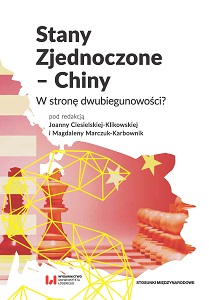

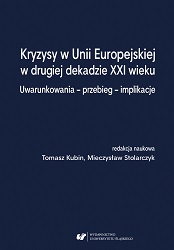
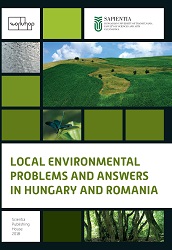
Keywords: ecological sustainability;water;Hungary
The current contribution forms part of the research project carried out under the title “Roles and instruments of local governments in the realization of ecological sustainability”. It wishes to focus on Hajdúböszörmény, which is a Hungarian settlement lying at the junction of the Nyírség and the Hajdúság, along main road No 35. Thus, it is situated in the Northern Great Plain region, more specifically in Hajdú–Bihar County. Hajdúböszörmény occupies 370.8 km² and Bodaszőlő, Pród, Rét, Telekföld, Vid, and Zelemér belong to the inhabited part of its periphery. Hajdúböszörmény’s population is roughly 31,000 inhabitants, that is, 0.32 per cent of Hungary’s population, and its population density is 84 person/km2. Regarding the research projects and this essay, two remarks have to be made. On the one hand, although the project focuses on the ecological sustainability, this study will necessarily examine all three pillars (environmental, social, and economic) of sustainable development. On the other hand, the present research endeavours to highlight water, and so the other environmental elements are excluded from its scope. While conducting this research, we mainly relied on the minutes of the meeting of the Municipal Council, as in our opinion these provide the most up-to-date source of information relating to the challenges the Municipality of Hajdúböszörmény has to face. These sources were supplemented, among others, with local decrees and decisions, environmental status reports, and integrated urban strategies.
More...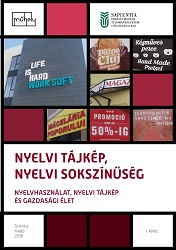
Keywords: Beregszász;tourism;linguistic landscape
I have collected signs in a given settlement in Beregszász. The settlement also becomes important as the Subcarpathian Hungarians are concentrated in the district of Beregszász, and thus the city has an outstanding role in the life of local Hungarians. The analysis of the linguistic landscape collected in the settlement is suitable for capturing the minority fate of Hungarians and for the demonstration of their language use possibilities. In linguistic landscape studies, multiethnicity is a very important aspect, and since more than one ethnic group lives in Beregszász it is even more justified to present the linguistic landscape of the chosen settlement. In my study, I analyse the language landscape in the settlement with two analyses (collected in 2013 and 2017), and I analyse the experiences of a landing-place fair in the context of language and economy.
More...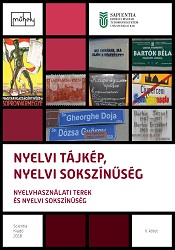
Keywords: memes;Hungarians in Transcarpathia
The spread of internet-based communication and other forms of technology-mediated linguistic practices has had a significant impact not only on formerly preferred modes of interaction within the Transcarpathian Hungarian community but also on the concepts of private and public communication. The aim of the paper is to obtain a deep insight into the nature and functions of the internet-memes of Hungarians in Transcarpathia in the social networks. Focusing on the peculiarities of language use and the presence of contact phenomena in the memes and the actual as well as the potential impact these have on Hungarian language maintenance, the increase of language creativity, identity constructions, and reflection of the political and social activities.
More...
Keywords: codeswitching; bilingual people
The current article belongs to bilingual studies and discusses the available communication possibilities of some Hungarian speakers when using the Romanian language, targeting the phenomenon of codeswitching. At first, a theoretical basis is presented within the limits allowed by the article. The methods used in the conducted research are those of interviews and observations, the number of subjects being quite small. As a consequence, the research is not representative but rather informational, based on which some observations could be made regarding the appearance and the cause of linguistic codeswitching. It has been noticed that codeswitching has got a specific behavioural-emotional component, and certain communication-related intentions connect to one of the languages consistently.
More...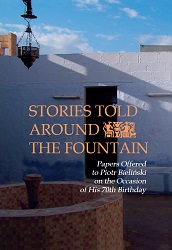
Keywords: Sumerian and Babylonian music; musical instruments; Sumerian song types; organology; percussion; percussionists
This article discusses certain aspects of early Mesopotamian musicalpractices, focusing on a small set of native terms for instrumentsand performers. Assuming, in anthropological terms, that musicalinstruments, like other culturally important objects, can be classifiedin multiple contextually different ways, it is argued that certainSumerian words could in some contexts signify specific instrumentsor types of musicians, while in other usage could stand for a class ofinstruments, for song types, or in the case of balagˆ, for all musicalinstruments. More specifically, the terms adab and tigi are subjectedto analysis, resulting in the proposal that in 3rd and 2nd millenniumtexts these designated only song types and not, as is often asserted,physical musical instruments.
More...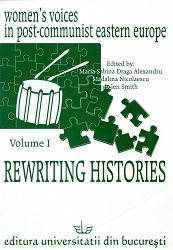
Keywords: Balkans; regional identities; totalöitarianism; inner emigration;
Recent critical investigations into representations of Eastern Europe, whether based on a historical investigation of cultural clichés or on contemporary appreciations of the area, often focus on the predominance of the image of the Orient to signify what is perceived as alien to the Western observer. Blandiana’s image of the Oriental Town moreover captures both exotic spectre and totalitarian dystopia, feeding perhaps on a notion of Oriental despotism. An investigation of the convergence of the ‘Oriental’ and the ‘totalitarian’ model reveals that it is possible to argue that the Orient and the totalitarianism it signifies illustrates in retrospect the multiple binds o f a dystopian past, with the Oriental Town a repository of otherness, but interlaced with utopias of the motherland. Both self and other, home and exile, motherly and totalitarian, Blandiana’s Oriental Town comes to embody the uncanny force of Bhabha’s comment on postcolonial encounters when ‘the “other” [...] emerges forcefully, within cultural discourse, when we think we speak most intimately and indigenously “between ourselves”. The construction or even the invention of ‘Eastern Europe’ (the ‘Balkans’) forms a particularly volatile centre of debate for ‘Eastern’ and Western’ (or indeed ‘East-West’) scholars. A common point of departure for the core of imagological studies of Eastern Europe/the Balkans seems to be that geography implies a more or less conscious ideological choice, and the focus of these works is rather on the mechanisms of perception and imposition which create a regional identity.
More...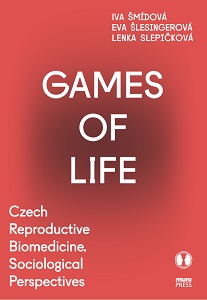
Keywords: Biopower; Reproductive Biotechnologies; Life; Genomization;
In the following chapter, the conceptual tools and analytical framework mentioned in the previous text – mainly biopolitics/ biopower and the idea of life itself – will be reflected. Our analysis of Czech reproductive medicine presupposes a more extensive understanding of the social forces and forms of power (governmentality) which are defining, governing, and naming human embodiment in society and politics. Therefore, the concepts will be analysed in connection with social processes, such as the post/genomization of society and broader biosocial changes in our biosocial societies.
More...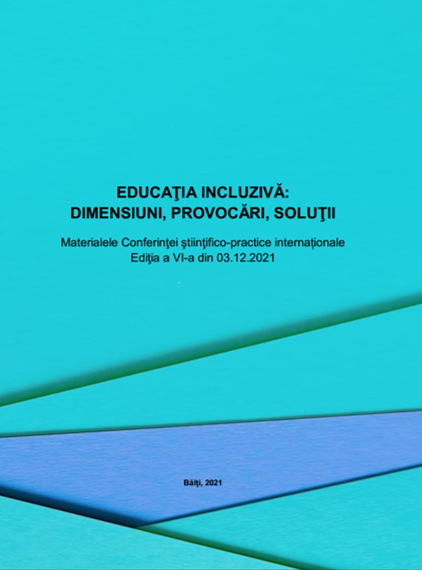
Keywords: multiethnic environment; initial vocational training; intercultural education; intercultural competence
The article addresses theoretical and praxeological aspects of the need for the formation and development of intercultural competence for future teachers who will provide educational services in multiethnic, multiconfessional, multilingual environments. Social reality assigns to contemporary education the task of forming a personality capable of adapting to the accelerated pace of changes in society and constructively solving problems-situations that may arise in the context of cultural, multiethnic and multiconfessional diversity. The multiethnic academic environment contributes to the formation of intercultural competence, which is especially important for future pedagogues
More...
Keywords: personal identity; self- awareness; self-esteem; self-confidence; strategies
The text focuses on building personal identity for primary school students. During early schooling, learning and school have a significant impact on personality development. Self-awareness and self-image are influenced by the relationships with others, parents, classmates, teachers. Role play, therapeutic stories, storytelling, shows, specific situations, educational games are ways in which we can bring our contribution to the identity formation of primary school students
More...
Keywords: inclusive education; students with special educational needs; ICT; inclusion; educational software
Currently, the development process of the education system is characterized by the rise of the role of technologies, adding a valuable set of new teaching resources and tools, adequate to support the inclusive instructional-educational process. The use of the computer in teaching-learning is related to solving two important problems of promoting and capitalizing on inclusive education. On the one hand, the use of the computer facilitates the development of children's motivation for learning activities, and on the other hand, it contributes to the development of computer skills, which, in turn, can facilitate their socio-professional insertion. The role of ICT in the education process of children with SEN can be approached through a threefold dimension: compensation; learning (didactic); of comunication. ICT offers a multitude of special and innovative methods and techniques for training children with SEN.
More...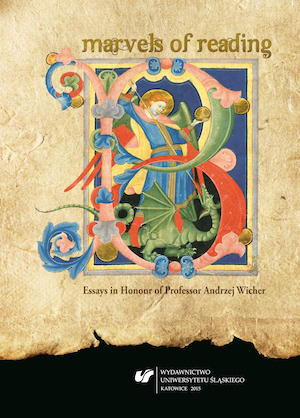
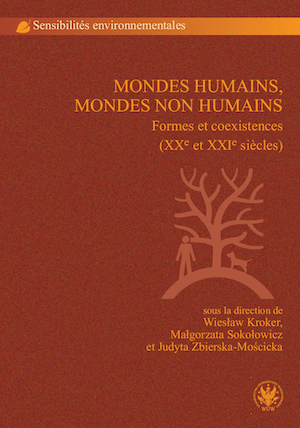
Keywords: predator; victim; new sensitivity; heroism; victimization; Dieudonné
The article presents an analysis of Belgian author Adeline Dieudonné’s bestselling novel "True Life" in relation to contemporary humanistic reflection on the relationship between humans and animals, in particular by such philosophers as Jacques Derrida or Elisabeth de Fonteney. The novel is also analysed in the context of the emergence of a new sensitivity, which Jean-Marie Apostolidès labels as the “culture of victimization”. The purpose of the hunting images appearing in the novel is to criticize traditional cultural codes related to the “culture of heroism” (Apostolidès), responsible for shaping interpersonal relationships on the basis of the predator-victim relation. Dieudonné postulates the need to redefine traditional social roles, and also treats her work as a form of literary “intervention” aimed at creating conditions for non-aggressive coexistence of all living beings.
More...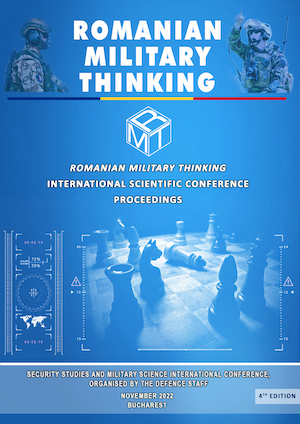
Keywords: cognitive dissonance; deterrence; European defence; perception; NATO; strategic stability;
The February 2022 military aggression on Ukraine has sent shock waves across European capitals as well as across the Atlantic. This “new normal”, namely a conventional war in twenty-first century Europe, is both hard to process and inherently ominous as to the future of the European security architecture and strategic stability on the continent. The aim of the article is to analyse the combined effects of technological advances in information/computing technologies and human cognition on strategic choices such as nuclear deterrence strategies. The paper is looking to address the proposed research questions through a cognitive psychology lens, with a particular focus on perception and cognitive dissonance. The plasticity of both the geopolitical environment and the information space present the optimal conditions for propagation of cognitive errors in human decision-making. The article is taking a closer look at what said vulnerability means for the Euro-Atlantic security architecture, most specifically for the North Atlantic Treaty Organization.
More...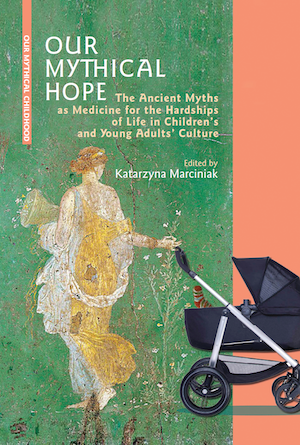
Keywords: Rudyard Kipling; Jungle Book; Kotick the White Seal; animals; Fortunate Isles
Rudyard Kipling’s short story "The White Seal", published in 1893 and incorporated into his "Jungle Book" a year later, is amenable to multiple interpretations. Today, the dominating approach to this story is influenced by criticism of postcolonial literature. The author offers a different insight by considering an underexploited layer of the text. He proposes to unravel the web of mythological/religious references and radical ecological demands – a web that determines the story’s originality and makes its animal protagonist, Kotick the White Seal, a bearer of hope for the readers also in our times.
More...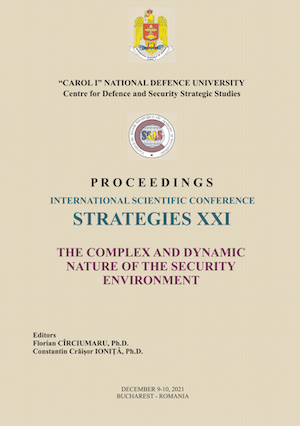
Keywords: Black Sea; European Union; strategic autonomy; strategic culture;
In the current global context of great power competition and while fighting to overcome and recover from the COVID-19 pandemic, the EU has embarked on the ambitious undertaking to redefine itself as a more capable, credible, independent when necessary, defence stakeholder, the EU strategic autonomy process. Throughout this endeavour, it is becoming more and more apparent that one of the more challenging dimensions of the EU strategic autonomy debate is dial of national characters and strategic cultures within the union. The aim of the paper is conceptualizing the strategic culture framework in EU context and to identify both positive and negative factors that carry the potential to influence the formation of an authentic European strategic culture. The final conclusions will assess whether any subsequent actionable policy is, in fact, possible in the foreseeable future, mainly to what extent an autonomous European strategic culture could act as either a facilitator or inhibitor of EU security and defence decision making.
More...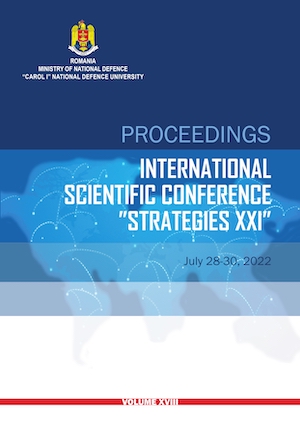
Keywords: the Balkan and Eastern Mediterranean regions; transnational organized crime groups; counterintelligence methods;
In the post-Cold War era, new challenges emerged that have threatened regional and global security. Before the turn of the 21st century, the world was primarily dominated by states, but now, non-state actors are of critical importance in national and international security in today's globalizing and multipolar world. Of these non-state actors, transnational organized crime networks and groups have become a key security threat in the national, regional, and global environment. Transnational organized crime groups threaten to destabilize basic societal, economic, and political institutions and values. While all nations face the threat of transnational organized crime groups, those post-war and post-conflict nations in transition are especially fragile to the effects that transnational organized crime groups can have on a nation's government, economy, and society. The Balan region has all been plagued by conflict and instability since the civil wars of the 1990s. Today, the Balkan and Eastern Mediterranean region has reemerged with strategic importance as the instability of nations in these regions are particularly susceptible to external malign influence by state and non-state actors. Concerns regarding the rise of transnational organized crime and its relationship with religious extremist groups have caused the international community to refocus on the Balkan and Eastern Mediterranean regions. Increasingly, transnational organized crime groups along with international terrorist groups are beginning to shareorganizational and operational features. Additionally, when it becomes advantageous, these groups will partner with each other. Transnational organized crime networks and groups have grown in both size and sophistication, and many major groups behave and assume the structure of secret organizations. Powerful transnational organized crime groups have developed in accordance with the structures of their host countries, which is why it is these groups flourish in those countries with more fragile political institutions. The ways in which transnational organized crime groups think and operate have made them successful. These groups take their illicit business ventures seriously, and understanding what these groups do, how they operate, and who they work with is critical in defeating them. By examining effective counterintelligence methods, this paper will focus on the strategic importance of transnational organized crime in the Balkan and Eastern Mediterranean regions, with a particular focus on Albania.In the post-Cold War era, new challenges emerged that have threatened regional and global security.Before the turn of the 21st century, the world was primarily dominated by states, but now, non-state actors are of critical importance in national and international security in today's globalizing and multipolar world. Of these non-state actors, transnational organized crime networks and groups have become a key security threat in the national, regional, and global environment. Transnational organized crime groups threaten to destabilize basic societal, economic, and political institutions and values. While all nations face the threat of transnational organized crime groups, those post-war and post-conflict nations in transition are especially fragile to the effects that transnational organized crime groups can have on a nation's government, economy, and society. The Balkan region has all been plagued by conflict and instability since the civil wars of the 1990s. Today, the Balkan and Eastern Mediterranean region has reemerged with strategic importance as the instability of nations in these regions are particularly susceptible to external malign influence by state and non-state actors. Concerns regarding the rise of transnational organized crime and its relationship with religious extremist groups have caused the international community to refocus on the Balkan and Eastern Mediterranean regions. Increasingly, transnational organized crime groups along with international terrorist groups are beginning to share organizational and operational features. Additionally, when it becomes advantageous, these groups will partner with each other. Transnational organized crime networks and groups have grown in both size and sophistication, and many major groups behave and assume the structure of secret organizations. Powerful transnational organized crime groups have developed in accordance with the structures of their host countries, which is why it is these groups flourish in those countries with more fragile political institutions. The ways in which transnational organized crime groups think and operate have made them successful. These groups take their illicit business ventures seriously, and understanding what these groups do, how they operate, and who they work with is critical in defeating them. By examining effective counterintelligence methods, this paper will focus on the strategic importance of transnational organized crime in the Balkan and Eastern Mediterranean regions, with a particular focus on Albania.
More...
Keywords: cognitive psychology; cognitive warfare; joint operations; military art; NATO; Russian Federation;
The concept of cognitive warfare is steadily gaining more and more attention in security and defense discourse. By employing a cognitive psychology perspective, the article is examining how perception and/or misperception factor into cognitive mapping of strategic and operational concepts. The central aim of the paper is to outline that the approach to the human domain is deeply rooted in nationally conditioned perception. The article is looking to achieve this academic goal by comparing the NATO conceptualization of cognitive warfare to the Russian Federations'. The structure is as follows: first, there is a brief review of the cognitive psychology paradigm, especially key concepts as they relate to the scope of the paper. The subsequent sections compare the NATO cognitive warfare approach to the opposing view, namely the one of the Russian security and defense apparatuses. The "special military operation" in Ukraine initiated by the Kremlin in 2022 confirmed that in the event of a territorial aggression against a NATO member state, the alliance as a whole remains the basis of European security and defense posture. It is for this very reason that the alliance ought to objectively analyze how Russian decision makers perceive Western perspective in the cognitive realm.
More...
Keywords: science education; Rewilding Science Action; students’ perceptions and attitudes; CONNECT project;
The performance of any economy is based on scientific knowledge and technological innovation. Consequently, a highly motivated workforce with skills in science and engineering is key to any prosperous economy. Science education has a critical role in providing scientific literacy to students, as well as in training young people to choose careers linked to STEM education. Understanding the science concepts and their application is nowadays challenging for students, due to lack of interest and motivation. “Science is not for me” is, unfortunately, a frequent phrase heard when discussing with young people. It is clear that the way science is taught must be adapted to the student’s profile and needs. In this respect, in Romania, the CONNECT project comes to meet this gap by designing and implementing four structured scenarios, embracing the format of Science actions. In order to evaluate the impact of each Science action in terms of students’ perceptions and attitudes concerning science, an instrument based on a 5-point Likert scale was developed in the frame of the project partnership. The feedback of 83 students who participated in the Rewilding Science action was collected, being emphasized that students are feeling more confident to solve problems in science and consider that learning science is enjoyable, even learning science is not easy. Although the majority of the respondents would like to do projects with others using science to improve the world, they - in the same ratio - would not like to be seen as experts in science.
More...